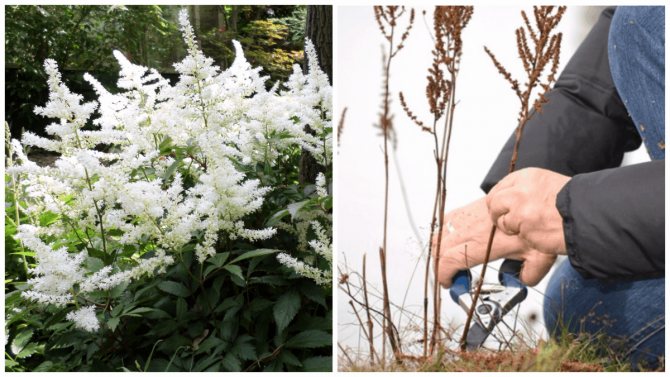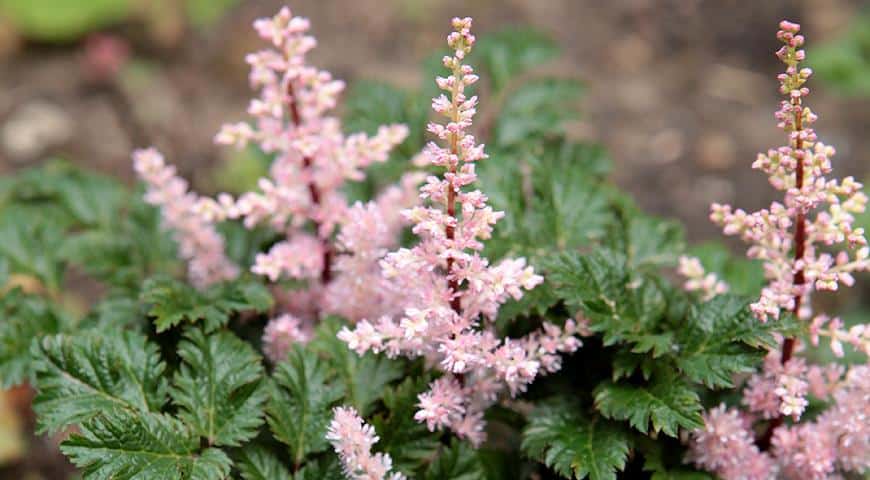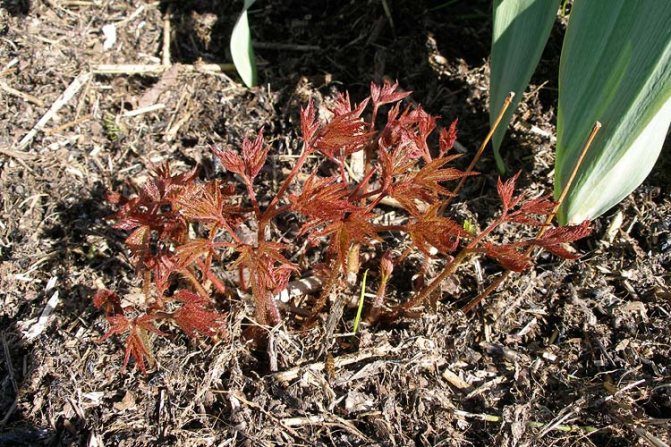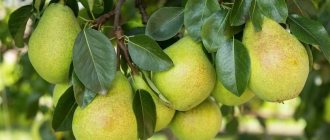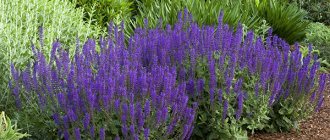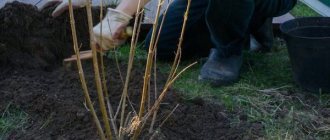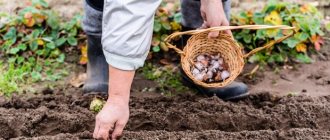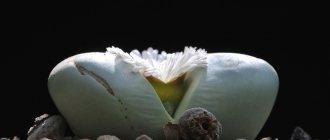Astilba is a beautiful perennial herb that invariably delights with the delicate beauty of its fluffy Christmas trees, inflorescences and lace leaves. It fills the garden with a sweet honey aroma and helps to immerse oneself in the world of tenderness and magic. In natural conditions, the queen of the shady garden is found in mountainous regions where the climate is monsoon, even at an altitude of almost 5000 meters. Therefore, this perennial is very hardy and frost-resistant enough, and it will be quite comfortable in various regions of our country, where the winters are quite cold.
How to properly care for this perennial in the fall, what should be done to prepare it for winter? All this will be discussed below.
How to properly trim astilbe
Astilba fades in mid-summer, but lush leaves continue to delight with their beauty until autumn. Therefore, after removing the peduncles, there is no need for pruning, this is done only in late autumn, when the leaves dry up and the time comes to prepare the plant for the winter cold.
- It is convenient to cut the stems with an ordinary pruner. Old shoots are removed completely, to the same level with the ground, but very carefully, in order to avoid damage to young buds - they are located slightly higher than the rhizome of astilba.
- Pruning is repeated annually, in autumn at the same time, before the onset of severe cold. On average, the time to remove dried leaves is in October or November.
- After the procedure, it is imperative to loosen the soil and lay it in a slide around the bush. Particular attention is paid to young plants - first years, and bushes over 4 years old - the rhizomes of such flowers are rather weak and vulnerable.
Advice. Pruning astilba requires sterility. It is very important to keep the instrument clean, and immediately before using it, treat it with a disinfectant solution. Poorly diluted potassium permanganate is well suited for this.
Astilba bloom
Shelter of astilba for wintering
Young bushes after timely pruning and mulching in a temperate climate do not need shelter. Starting from the age of 5, when the overgrown rhizome already protrudes strongly above the soil surface, the plant needs mandatory shelter.
The simplest, but at the same time reliable, shelter for a given culture is done as follows:
- Having retreated from the rhizome about 10-15 centimeters, 4 wooden bars are stuck next to the plant.
- The bars are tied together with planks.
- Dry foliage is poured inside the resulting frame.
- The frame with foliage is covered with a non-woven porous material - lutrasil.
- A dense and thick plastic film is placed on top of the lutrasil, pressing its edges with bricks, stones or sprinkling with earth.
Care after pruning
The care is not limited to astilba pruning, it is necessary to provide the plant with a comfortable environment so that in the spring it will again please with bright flowers. Astilba comes from mountainous terrain, so it tolerates winter well, but it also happens that there is little snow and not enough snow to wrap up the roots.
Despite the high degree of endurance, the rhizomes of the bush need warming and feeding. Mulching does an excellent job with this function.Dry leaves are laid on the pre-loosened soil - there are plenty of them in each area, you can use peat, rotted manure and crushed bark. It is not worth saving, the layer should turn out to be impressive - up to 30 cm. Such a "blanket" will not only insulate, but also serve as a barrier to the growth of weeds.
Using humus for mulching increases the chances of producing lush flowers and healthy shoots. The advantage of this fertilizer is that it decomposes slowly, nutrients are supplied evenly. What is especially pleasing to summer residents is that it is not necessary to abundantly fertilize astilba, 20 g of ready-made potash or phosphorus fertilizer is enough, and if the site is well located and the soil itself is rich in organic fertilizers, there is no need to feed the plant at all.
When to plant astilba?
To get a beautiful and healthy plant, you need to know not only how to plant a bush, but also when. Astilba is recommended to be planted in spring or autumn. In the spring - after the threat of frost has finally passed and the sprouts can be immediately planted on open ground. In a month and a half, it will bloom (at the turn of June and July). When to plant astilbe - largely depends on the climatic conditions of a particular region.
If you want to get flowers next year, you can only plant seedlings in the fall, when the summer heat subsides. Planting conditions are the same, it just won't bloom so soon.
The hole in which you plan to plant astilba should be twice as wide as the root system so that accidental damage can be prevented and have a depth of at least 15 centimeters. The loose earth that forms around the bush will contribute to more comfortable conditions for the growth of astilbe.
After planting, the pit is covered with clay soil (the same consistency as the soil next to the bush). Also check how much the soil is compacted next to the new plant to make sure all air spaces have been removed.
Preparing for winter time
It is not necessary to cover astilbe every year, but only when the plant is especially vulnerable. If we are talking about a two-year-old bush growing in central Russia, you can limit yourself to competent pruning of astilbe, weeding the soil and feeding.
- The area where the bush is planted should not be allowed to flood, because an excessive amount of moisture is fraught with the risk of rhizome decay.
- It is necessary to take into account the peculiarities of the growth of astilba - the rhizomes eventually lengthen by 5 cm and become bare, becoming very vulnerable to the external environment. In this case, warming for the winter is mandatory, especially in the northern part of the country, where winter is especially harsh.
- You should not try to insulate the astilba using airtight wrapping. Many people use polyethylene linen, but this, contrary to misconceptions, leads to the opposite effect. It turns out a real greenhouse, without the possibility of oxygen penetration, so necessary for the roots. In the spring, such a plant will most likely die.
Advice. Obviously, you can get a plant that is healthy and ready to bloom by spring only if all stages of care are consistently followed. Do not neglect the feeding of the atilba, because it is this factor that determines the number and size of flowers, as well as the endurance of the plant as a whole.
Astilba has taken root well in Russian regions, this bush is frost-resistant, readily grows in shady areas and is easy to care for. The decorativeness of the plant remains even after the end of the flowering period. In total, all care comes down to pruning and insulation. Provided that all of the above procedures are carried out, as well as the correct adherence to their technology, as a result, you can enjoy the beauty of Astilba for 15 years and even longer!
Regional distinctive features
The technology of preparation and shelter for the winter of fruit and ornamental crops depends on the characteristics of the climatic zone.If you do not properly prepare for wintering, you can destroy the plants growing in the garden with your own hands.
Astilbe bushes growing in the south of the country do not need to be covered. The mild and warm winter, which is typical for the Crimea, Kuban, Stavropol Territory, Adygea and Krasnodar Territory, is not terrible for astilba. In order for an ornamental perennial shrub to successfully overwinter, you need to properly mulch its rhizome and cut off shoots.
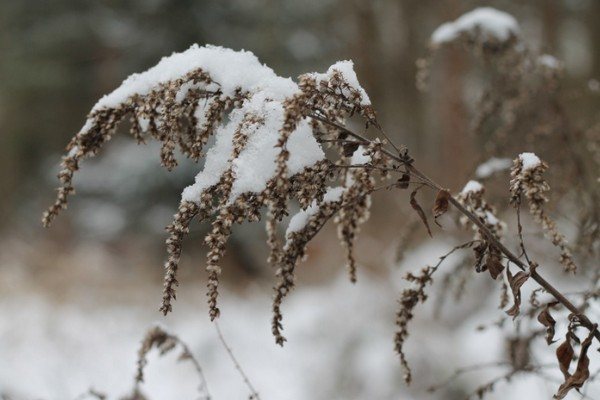
The middle zone of Russia is distinguished by sharp temperature drops. An unexpected thaw can be replaced by a sharp cold snap and severe frosts. The water accumulated in the ground freezes, which leads to glaciation of the astilba root. Ornamental shrubs cultivated in the Moscow region and other central regions of the country are insulated with any non-woven material.
As for the Urals, Siberia and other northern regions, it is recommended to additionally insulate astilba bushes with pine spruce branches, slate or roofing material. Make sure that moisture does not begin to collect inside the protective structure, otherwise the plants may die.
How to crop astilbe: video
An amazing plant with incredibly bright flowers is slowly beginning to win a place for itself in the backyards of our country. The name of this perennial is astilba. One of the main advantages of this truly mesmerizing plant is the huge variety of varieties. Throughout the entire flowering period, the plant retains its decorative effect, thanks to its amazing leaves. In wildlife, astilbe can be found in East Asia and North America. A total of 30 plant species are known, 10 of which are successfully cultivated in our gardens.
Of ten species, breeders were given the opportunity to grow a large number of varieties. Conventionally, all of them can be divided into dwarf (up to thirty centimeters high), undersized (from thirty to sixty centimeters), medium tall (from sixty to ninety centimeters) and tall (from ninety centimeters to one and a half meters). In nature, astilba prefers to grow along river banks and on forest edges. One of the main advantages of astilbe is its exceptional hardiness and increased frost resistance, so the plant survives even the most severe winters perfectly. But still, flowers must be prepared for the onset of the cold season.
How to properly trim and cover irises for the winter
Siberian irises (or killer whales) can hibernate without shelter. In the fall, dried stems are cut, leaving hemp no higher than 10 cm, and the rhizome is well mulched. Varietal killer whales are more sensitive to frost, so a dry shelter is additionally built for them and during the thaw they make sure that moisture does not get on the roots of the plants.
Prune suggested perennials in spring
You will learn what works and what doesn't for your own garden. The growth that results is too delicate to survive the winter, and the withering away is often enough to kill the entire plant. In the fall, flowering asters are usually pinched and forced several times during the growing season. Once they are finally allowed to bloom, they appreciate being left alone to recuperate before spring. Several blooms are so late that in the fall, the issue of clearing the falls becomes controversial. Bear Braces You may need to prune old, dying leaves throughout the growing season, but new healthy growth left over in the fall may very well remain evergreen throughout the winter, depending on weather conditions. Although they are not particularly attractive in winter, the seed heads will feed the birds. Karyopteris blooms with new growth. Cut back to 6-8 inches in spring. Newer varieties, especially, can be very sensitive to cold and should not be pruned until the buds begin to turn green.To reduce winter infestation, wait for signs of green at the base and then shrink it down to 6-10 inches. Fresh basal foliage will be harvested and should be left in during the winter so as not to stimulate softer growth in the fall. Leaving foliage and flower stems in tact protects the Cardinal Flower from some of the ravages of winter, so keep peeling until spring. At this point, you can trim the damaged areas or simply cut off the ground. When left standing in the winter, the seed heads provide food for the birds and can provide some self-seeding to compensate for any plants that do not survive. Anchusa can be pushed all the way to the end of the crown, as its foliage falls off quickly after flowering. But then allow the plant to recover and not cut until spring. When a plant is removed from a common weed, you can usually assume that it doesn't need to be concerned about survival. Jo-Pie will bloom well in the fall and then produce fluffy seed heads. You can cut it off if you choose, but it is not necessary for the plant to survive. The robe lady is not very fond of changing often. There is no point in trying to put the Lamb's ear away for the winter. Let it be and remove winter damage when the leaves weigh in the spring. Lavender is difficult to digest in many areas. Humidity is more often the problem than cold, but cold is a factor. Do not prune lavender at the end of the season, as new growth is extremely sensitive to cold. Wait until new growth appears in the spring before removing the winter back. As with Lavender, Santolina takes time to harden before winter. Leave foliage for protection and hope for the best spring. Mom Leave the foliage intact to protect the crown of the plant. Everything is best to let flowers bloom well in the fall. Oriental poppy poppies seem to fade or shrink after the bloom fades. However, a new flush of foliage must emerge and can be left on the plants in winter to act as mulch. You can remove old flower stems, but this plant is so temperamental that old foliage may be the only way to know where the plant is in the spring. In warmer areas, where it is more hardy, foliage can be evergreen. Little is left of this plant in winter. But many gardeners like to leave him standing, so they will remember where he is as it is too late to show up in the spring. The cones do not look terribly attractive in winter, but they attract and feed the birds. The crown is very sensitive to cold and leaves a clump of foliage to protect it. A 1/2 pruning will keep the foliage completely inverted and trap too much moisture around the crown. Like his cousin Lavender, Perovskaya doesn't like pruning this fall because the delicate growth is too sensitive to the cold. Wait for new growth to appear in the spring and then shrink to about 6-8 inches. If only new growth is from the base of the plant, the entire upper forest area has died and can be cut back to the ground. Lavender Flowers in this aerial plant are held so high that it is easy to forget about the accumulation of leaves at the base. Let them winter and clean any back in the spring.
- Clean in early spring.
- Weakening is unnecessary and can weaken the plant's resistance to cold.
- Minimal spring cleaning required.
- They are prone to swelling in soils that freeze and thaw.
- Leaving foliage intact helps mulch plants through the winter.
- Diving into the heat.
- In colder climates, simply cut the plant back onto its base in the spring.
- The winter survival of the plant is improved if the fall is not greatly reduced.
- Spring cleaning only when needed.
- Sun Requirements: full to partial shade.
- Soil requirements: moist-retentive, acidic soil.
- Flowering time: early to mid-summer.
- Zones: 4-9.
It is one of the most popular perennials in America today.
Autumn care. Preparing for winter
Pruning
Depending on the variety, astilba has different flowering times. Some plants bloom as early as June, others not earlier than mid-summer, and others, late flowering, at the end of August. With the onset of autumn cold weather, the plant stops blooming, but many gardeners are in no hurry to cut it. For even a faded plant surprisingly beautifully and exquisitely complements its dacha plantings with its semi-dry peduncles until late autumn.
It is important! Let's move on to removing the aerial part of the plant. It can be produced with the help of a well-known summer cottage tool - a secateurs. In order not to harm the plant and not infect it with fungal and other diseases, garden shears should be disinfected beforehand. This can be done by lowering the instrument for twenty to thirty minutes in a solution of potassium permanganate. It will be great if the grower can process the tool from bush to bush. So it will reduce the risk of transferring fungal diseases from plant to plant.
How to prune correctly? First, the entire aerial part of the plant should be completely removed. Secondly, care must be taken to ensure that young kidneys are not exposed. It is important to know that the new buds of astilba are located in the upper part of the rhizome. Therefore, after pruning, the bushes should be carefully spud and mulched. Bushes should be spud to a height of three to four centimeters.
Mulching
In order to protect the root system of the plant, as well as young buds, it is necessary to cover the soil of the astilba district with mulch. Dry sawdust, peat or rotted manure are perfect as an overhead shelter. Sometimes gardeners use shredded tree bark as mulch. Mulching protects both young buds and adventitious roots.
Fertilizer
In preparation for the winter cold, astilbe should be fertilized. This will allow the plant to survive the winter safely and not lose its decorative effect. Potassium-phosphorus fertilizers are perfect. It will be enough to add no more than twenty grams of top dressing for each bush.
In addition to potassium-phosphorus fertilizers, it is desirable to add humus to the soil. Astilba prefers to grow in nutrient-rich soils. Therefore, it will be great if the summer resident, before the first frosts come, enriches the land with organic matter. Do not worry that the plant will grow, because rotted manure will decompose slowly, and only by the onset of the spring thaw can the plant be used as an additional source of energy.
Shelter
Astilba is a surprisingly cold-resistant plant, so if a summer resident grows it in the middle lane, then you don't have to worry about shelter. It will be enough just to mulch the plantings well. However, the situation is different if we are talking about four to five-year-old plants. Weakened, with a gradually growing bare rhizome, astilbe run the risk of not surviving the cold. Some gardeners choose classic shelter options for their protection: spruce branches, dry leaves, sawdust, hay. The main thing is to use natural materials so as not to create a greenhouse effect for plants. It is very important to protect the bushes from the ingress of excess water, which can subsequently cause the death of the perennial.
Actively gaining popularity.
Astilba's rhizome is woody, dense, thickened, branched. Seedlings appear in April in the form of reddish claws.
The stem of most astilbes is strong, together with the inflorescence reaches 60-100 centimeters, however, there are also miniature varieties of astilbe with a height of 15 to 30 centimeters.Astilba can be loved for the leaves alone, and they are very beautiful, complex, double-pinned, very delicate, green, dark green or reddish-green in Astilba. Individual leaves may be heart-shaped. The top side of the plate is shiny and the bottom is matte. On sunny days with a slight breeze, the astilba bush gives an unusual play of light.
Astilba blooms from late June to August. Some varieties of astilbe bloom even in September, so if you wish, you can pick up several astilbes blooming in the area from June to September. Flowers can be white, pink, red, purple or lilac of different shades, collected in large racemose inflorescences up to 20-30 cm long, pyramidal, drooping or rhombic in shape.
From a distance, astilba inflorescences resemble fluffy panicles, but in fact it is not fluff at all. When you take a closer look at the flowers of astilba, it turns out that the optical illusion is represented by very thin graceful petals and stamens. Astilba seeds are easy to set, but they are very, very small.
The most famous types: Chinese astilbe, Japanese astilba, David's astilbe, Thunberg's astilbe, Whole astilbe. On the basis of these species, many varieties have been bred. All varieties of astilbe are classified into 11 groups, of which the following hybrids are most popular: Arends, Astilboides, Chinese, low, fringed, Lemoine, pink, variegated, Take astilbe, Thunberg astilbe.
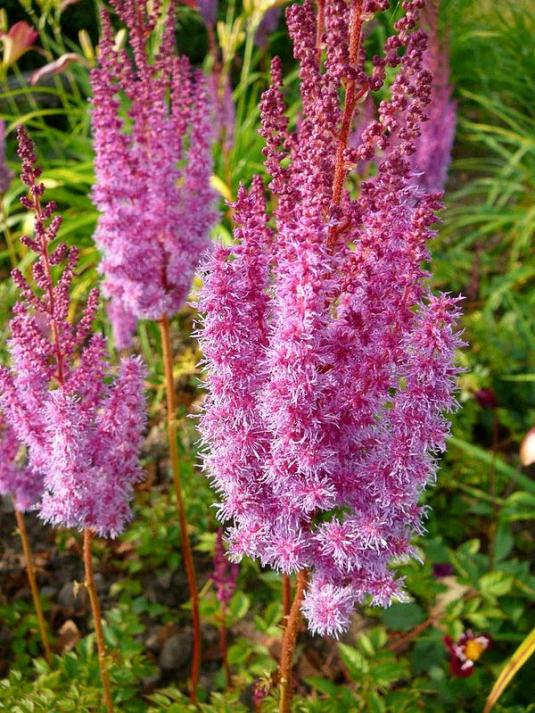

Astilba: rules of care
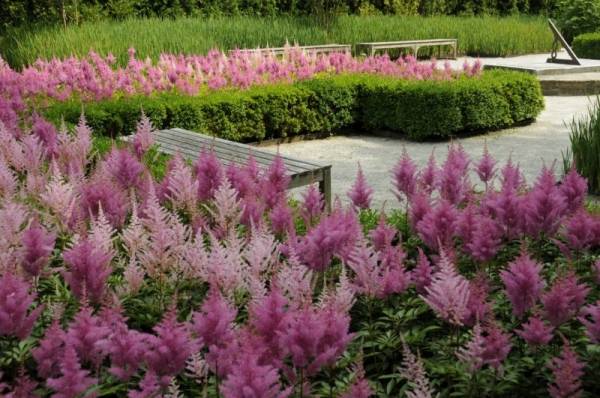

If the planting was carried out in compliance with agrotechnical requirements, then it will be much easier to care for the plant. When implementing comprehensive care, you should be aware of the basic rules.
Hilling
Due to the gradual vertical growth of the rhizome, after a certain time, the root system is deprived of the opportunity to feed. To prevent this, astilbe needs systematic hilling.
Watering the plant
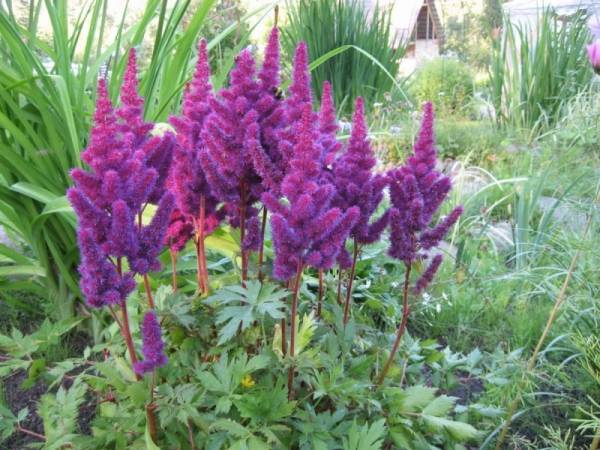

When growing an exotic flower, water plays an important role: perennials require systematic watering. The multiplicity of moisture can reduce periodic mulching, which also helps to get rid of weeds, frequent loosening procedures and prevent overheating of the rhizome. Depending on the type of flower, the amount of irrigation is regulated - from medium to high.
However, there are some general rules:
- In the budding phase, any species needs large and systematic volumes of water.
- During a drought period, watering is carried out twice a day - in the morning and in the evening.
Important! Even the slightest drying out of the soil should not be allowed, which has a detrimental effect on the culture.
Top dressing
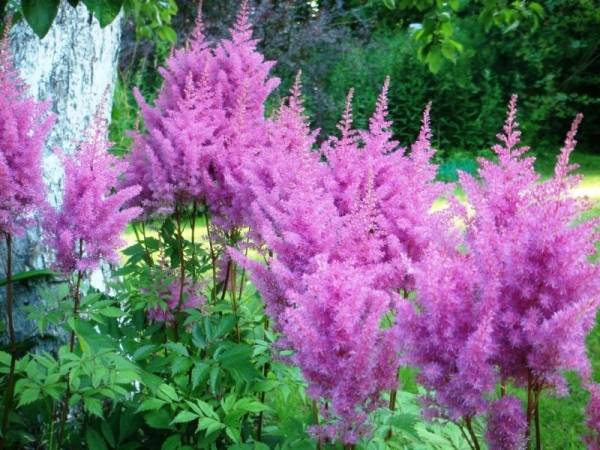

When applying fertilizers, you can use the following plan:
- In the spring, the plant requires a higher nitrogen content, which is present in urea, ammonium nitrate or humus: when hilling, the soil is enriched with one of these fertilizers.
- At the beginning of summer, to ensure long-term flowering, the culture needs potash feeding: half a liter of a solution prepared from 2 tablespoons of potassium nitrate per bucket of water is used for one copy.
- At the end of flowering, the dressing should include phosphorus, which helps to endure the winter easier: 20 g of superphosphate is applied under each bush.
Attention! After each top dressing, the soil under the flower is loosened and mulched.
Pruning astilba
When flowering is over, it is not recommended to cut the inflorescences: drying flowers retain their decorative effect for a long time and decorate the garden plot. Pruning astilbe shoots, in which they become flush with the ground, is carried out in preparation for winter.
Transfer
The average life span of a culture is 5-7 years, after which it is transplanted by dividing the rhizome, as in reproduction.
Advice! If you carry out proper care with systematic fertilization, you can extend the growth period of astilba in one place up to 20 years.
Autumn care, preparation for winter
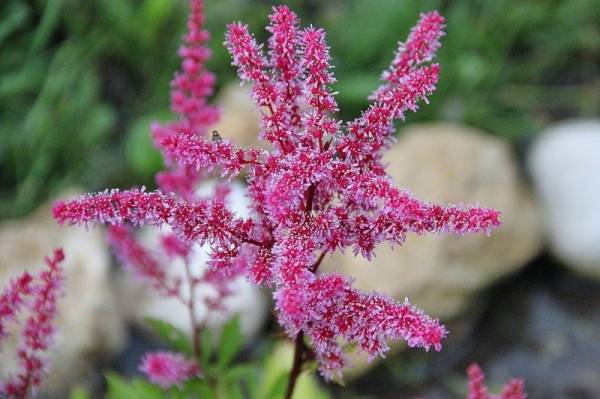

Astilba belongs to frost-resistant plants that have adapted to Russian winters. However, spring temperature drops remain fatal for her. To prevent freezing, the plant is covered with natural material - spruce branches, garden foliage.
Advice! If possible, the soil between the specimens should be mulched with pine needles.
Landing astilba
It is generally accepted that astilba - plant for partial shade
, not fond of open and sunny places. This is due to the fact that astilba does not tolerate drought and overheating of the rhizome. But if in hot weather it is watered every day, and the root outlet is mulched, then it feels great in the sun. Its flowering will be more lush and luxurious than in the shade, however, less long, however, like most other perennials.
Astilba prefers nutritious, loose and moist soils. In one place, astilbe can grow up to 10 years, therefore, you need to approach its planting seriously. Where it is planned to plant astilba, they dig up the soil, remove all roots and weeds, make holes 30 centimeters in depth and width. 20-25 g of superphosphate, a handful of wood ash and half a bucket of humus or compost are poured into each hole. Everything is thoroughly mixed with a part of the garden soil dug from the hole, the astilbe cuttings are planted and watered well. The topsoil at the roots of astilba should be constantly loose and moist.
In the first year of planting, you do not need to do any more fertilizing, only mulching the soil. When growing astilba, perhaps, cannot be overemphasized humus or compost in the form of mulch
... But sawdust, crushed bark or grass can also be used as mulch.
During the growing season, you need to constantly weed the grass around the astilba, because the roots of some weeds, for example, weeds, entwine the rhizome of astilba and oppress.
Landing in open ground
The flower belongs to a rather unpretentious plant. but to obtain lush greenery and abundant flowering, a number of rules should be followed, starting with the preparatory work before planting.
Site and soil preparation


When choosing a place, it should be borne in mind that astilba is a plant that prefers partial shade: the direct rays of the midday sun have a destructive effect. You should not plant bushes in areas unprotected from the scorching sunlight. Although some varieties adapt in sunny areas, while shortening the flowering period. The culture grows well on any type of soil, giving preference to loamy soils, the acidity of which ranges from 5.5 to 6.5, with a high occurrence of groundwater. An excellent option would be to plant a plant near natural or artificial reservoirs.
How and when to plant?
The best time for planting bushes is spring. If circumstances force the procedure to be carried out in the fall, then this is done long before the onset of frosty weather, otherwise the plant may not have time to take root.
When disembarking, the following algorithm should be followed:
- Organic fertilizers are applied at the rate of 2 buckets of compost per m2 to the previously dug up and cleared of weeds.
- Planting pits of 25x25 cm are prepared at a distance of 30 cm from each other.
- Before planting, ½ cup of wood ash and a tablespoon of complex mineral fertilizers are poured into each hole, after which they are well moistened.
- A seedling is placed in the hole so that the soil layer above the growth point is 4 cm.
- After planting, the site is mulched with a 3 cm layer of peat, which allows you to retain moisture in the soil and protect the plant rhizome from overheating.
Reproduction of astilba
reproduces vegetatively: by dividing the rhizome, renewal buds, cuttings.
The easiest and most reliable way is division of the astilbe bush
... The early spring division of astilbe will allow the divisions to bloom already this year. However, if for some reason you did not manage to divide the astilbe bush in the spring, this can be done in the fall after flowering. Although some sources say that astilba can be propagated in summer, but, in my opinion, this is completely barbaric.
In general, perennials blooming in autumn are propagated in spring until mid-May, blooming in spring are propagated in autumn. So here you need to look at the situation: if your astilba blooms in June, then it is better to divide it in the fall, if the variety blooms in August, then it is better to divide it in the spring.
Astilbe bushes are divided once every 3-5 years. To do this, carefully dig out the rhizome, free it from excess soil and cut it into 4-5 parts with a sharp knife. The size of the division does not play a big role, it is more important that it has at least 1-3 buds of renewal and 3-5 centimeters of branching of the rhizome is necessary.
Delenki are planted at a distance of up to 0.5 meters from each other. After planting the astilbe cuttings, especially if it is done in the summer, you need daily watering for at least two weeks.
For early spring planting, watering is also important, but not as abundant as in summer. With early spring planting, the astilba division is more important than warmth. If the weather turns out to be cold, then you need to cover the plantings of the astilba divisions with non-woven covering material or polyethylene bottles that are at hand.
In the spring, when the reddish claws of astilbe shoots only appear, but before the shoots regrow, astilba can be propagated by renewal buds
... The hatched buds are cut off with a small piece of rhizome and planted in mini-greenhouses or seedling boxes in a peat-sand mixture (3 parts and 1 part of sand), followed by covering with glass or polyethylene bottles. In this case, the planted astilba buds take root within a month.
Propagation of astilbe by cuttings
Is a rather troublesome task. For grafting, cut off spring or summer shoots that have developed from lateral buds, 10-15 cm long. Astilba cuttings are rooted under a film or polyethylene bottles with constant watering, spraying, airing. But this method of breeding astilba can be useful if you have a rare variety that you really want to propagate, but it is still too small for dividing the rhizome.
Only species astilbe reproduce by seeds
, because varieties and hybrids during seed propagation no longer repeat the maternal characteristics of the plant.
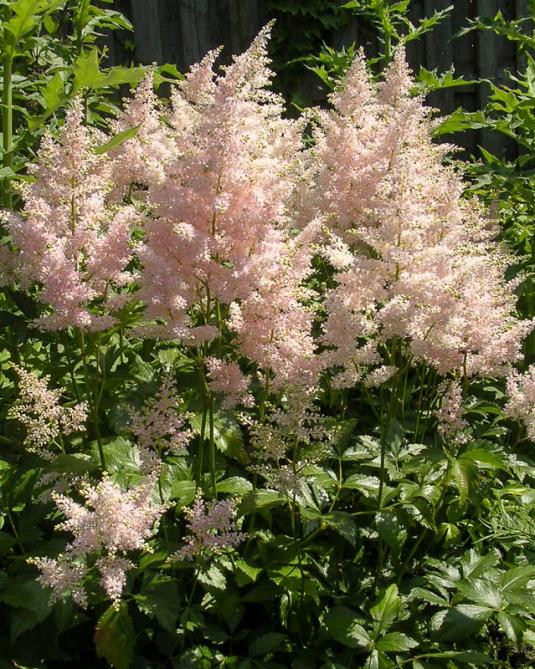

When can astilba be transplanted
Since our bush constantly succeeds in moisture, especially in summer, the best option is to transplant in spring or autumn, when the sun is still (or already) not so hot. When it is possible to transplant astilbe with minimal losses for the plant - each grower decides independently. The preferred option is late August - early September. The flower will transfer the procedure much easier, which means the result will be better. Some gardeners argue that transplanting can be carried out even when the first buds and flowers have already appeared on the bush - it is important to do everything very carefully here: it is necessary to transplant along with a lump of earth and water it regularly. That is, even the growing season will not have much effect on the transplant efficiency. They believe that the only thing that can prevent a high-quality and effective transplant is the lack of sun and lack of moisture.
Preparing Astilba for winter
Astilba is considered a winter-hardy plant. In the fall, withered stems and leaves are cut off.In principle, astilbe does not require additional shelter, but in the northern regions it is better to mulch the astilbe rhizome with humus or peat in a small layer of 3-5 cm.
Astilba is a shrub that attracts attention with a large number of small flowers. They come in a variety of shades and delight the eye until autumn. But even despite the fact that flowering can continue until cold weather, at least minimal preparation of the astilba for winter is necessary so that the bushes bloom again next year.
Today, many varieties of shrubs are known, the flowers of which can bloom at different times. It is for this reason that it cannot be said that the shrub begins to be cut after flowering. Inflorescences of some varieties fade at the end of June, others - only with the first cold weather. At the end of flowering, it is important to remove only the peduncles. Many are in no hurry to start pruning astilba, since the shrub looks great on the site even without bright and unpretentious flowers. Due to the presence of spreading leaves of an unusual shape, shrubs delight the eyes at least until the beginning of October.
The pruning process begins when the leaves dry and darken. This immediately catches the eye, because the plant loses its decorative properties. Cropping is done as follows:
- use a pruner to remove the aerial part of the plant;
- before starting the process, it is important to disinfect the tool in order to eliminate the risk of infection of the bush;
- you also need to prepare a manganese solution: several crystals per 1 liter of water; they handle the blades of the tool and after trimming;
- you need to leave young buds and remove shoots located slightly higher from the rhizome;
- after pruning, astilba must be spud so as not to leave bare roots;
- at the end - loosen the soil and build a small embankment about 4 centimeters high.
Protection against diseases and pests


When viewed on an exotic perennial, sometimes lesions are noted with a slobbery penny, gall and strawberry nematodes. Pennitsa colonize the sinuses between the leaves, where after a while foamy discharge with larvae appears. Yellow spots are formed on the leaves, which provoke the gradual wilting of the perennial. Gall nematodes also attack the aerial part of the plant, which makes it easier to control this pest. As a protective measure, when such lesions are detected, Astilba is treated with insecticidal preparations according to the instructions, "Confidor" and other analogues. The strawberry nematode infects the rhizome, which negates attempts to save the plant. Such specimens should be removed in a timely manner so that the pest does not spread to neighboring bushes.
Fertilization
In order for astilba to delight the eye with refined beauty in spring, it is necessary to fertilize the soil layer in which it grows before winter. It is a good idea to use phosphate-potassium fertilizers as a top dressing. 20 grams is the norm for each individual shrub. To fill the soil with nutrients for the spring period, it is also necessary to use humus. The mass decomposes slowly, so it will fertilize the soil by the beginning of the growing season. If the soil is already filled with organic matter, only phosphorus-potassium fertilizers are enough.
What is special about caring for astilba in autumn
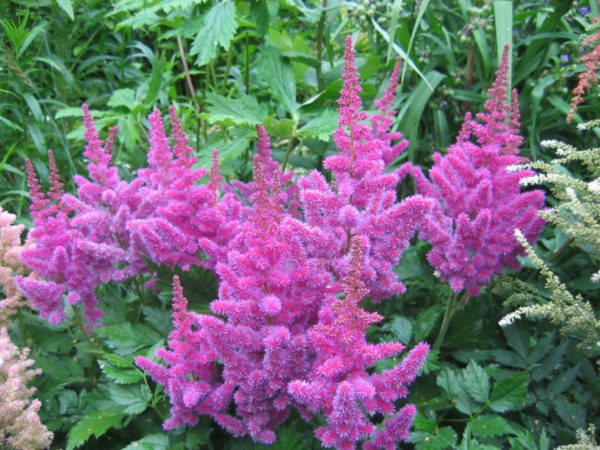

Astilba is a plant that has lived for a couple of decades. It is hardy, it survives cold weather well. Therefore, there is often a desire to do nothing at all. But in the first year, the shrub needs special care. To make it stronger, the peduncles are immediately cut off. Then all the beneficial substances will not go to flowering, but will go to the development of roots. The soil must be loosened to ensure regular air exchange, watered. Near young plants, all weeds are removed, but the overgrown astilba itself then pushes them out.
Shrubs that are 5-6 years old also require care. By this time, the roots are already actively growing, their sensitivity to cold increases.Therefore, the soil near the bush is not only mulched, but also covered with non-woven material.
The whole process of caring for astilba in autumn and preparing a flower for wintering consists of three stages:
- Top dressing.
- Pruning flower stalks and dry stems.
- Covering the soil with mulch and cloth.
Cold protection: what plants need it
Although astilba does not belong to the category of too demanding plants, gardeners note certain nuances of preparing a perennial for winter, depending on the climatic characteristics of different regions of the country.
For example, in the Moscow region, winter is often not too frosty and snowy, so you just need to mulch, cut and spud the plant. When mulching, it is best to use straw, spruce branches or any other natural material through which air will pass. This will not create a greenhouse effect. You can also prepare a plant for winter in the Volga region.
Shelter of astilbe for the winter is mandatory in any region if it has been growing for 4-5 years already. With the growth of the bush, its roots are more and more exposed and in the cold season they simply freeze out. Therefore, to protect from the cold, they use not only careful insulation of the roots, but also the entire trunk.
As for Siberia and the Urals, where winters are frosty and colder, here the plants are thoroughly prepared for winter and flower growers do not doubt whether it is necessary to cover astilbe for the winter. In these territories, the ground freezes to a depth, sometimes up to one and a half meters, so the shrub is not only mulched, but also hidden under a covering material stretched over a wooden frame.
Mulching
The mulching process can be started immediately after hilling and pruning. Such measures must be taken in order to protect new buds and the root system from the cold. Mulch is a kind of "blanket" that covers the roots and the lower part of the plant. Thanks to this process, the soil near the roots remains loose. Mulching allows the root system to breathe, protecting it from decay. For mulching, manure, bark, peat or sawdust are most often used.
Shelter with materials
Complete shelter of astilbe for the winter involves the use of not only mulch, but also special covering materials. It is best to cover astilba with spruce branches, dry straw and other natural “insulation”. Only they can keep warm and not allow excess moisture to pass through. This is a guarantee that the plant will successfully survive the cold season.
Sometimes polyethylene is also used for shelter. Unfortunately, the material is non-breathable, so a greenhouse effect is created under the “blanket”. In this situation, the roots of the perennial can rot.
But if the winter in the region is characterized by extreme temperatures, frequent precipitation in the form of rain or sleet, then a wooden frame with a film cover is the best option. You can also use various fabrics and non-woven fabrics that are available in specialty stores.
Astilba is a herbaceous perennial that adorns any flower garden with its bright velvet inflorescences. In nature, it grows in mountainous regions with a monsoon climate, which makes it very unpretentious. Competent care in the fall and preparing the astilba for winter will help the plant survive the frosts and delight others in the coming season with lush inflorescences of various shades.
How to keep astilba in winter
With the arrival of frosty days, flower growers begin to worry about their plants, and they do the right thing. And when it comes to perennial plants and you want them to bloom for many years, then you need to cover them for the winter.
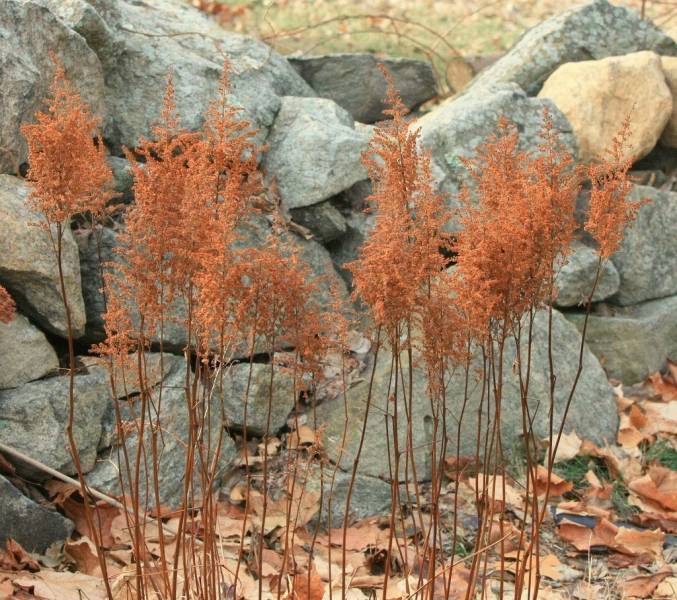

It is important to know that this plant has already managed to adapt well to our winter frosts, but it still does not tolerate temperature drops in spring very well. Therefore, you should take care of astilbe - cover it by creating protection from natural material - there should be 2 layers, for example, you can use spruce branches for this.The soil on which the plant is located must be covered with pine needles.
Although astilbe is frost-resistant, it is still better to cover the plant for the winter, especially if you have a young astilbe, a 5 cm layer of peat is suitable for its protection, dry leaves up to 10 cm, and you can put a film on top.
In fact, almost all perennials can tolerate our winter climate well without shelter. But some species are capricious in this regard, they can be destroyed by severe frost, the plant becomes colder if there is no snow, since this is an additional shelter from the cold. To protect such species, it is necessary to create a reliable shelter. And if winter passes practically without snow, then you need to make additional insulation for the perennial. Plants should be covered when the ground is already 5-7 cm frozen, while the cold temperature is constantly maintained.
For old and hardened plants, it is not necessary to make a winter shelter, but young astilbe should be covered. In the winter without snow, they freeze. This plant winters well in natural conditions, moreover, it is not afraid of pests.
If you grow astilbe in the southern region, then you do not need to shelter it from frost. But for frosts in the spring, although a small shelter needs to be made, especially if the spring is cold and rainy.
If you want to see how astilba blooms in winter, then distillation can be used. Why choose a young and strong bush in the fall, which has always had enough moisture and nutrition. It must be dug up and transplanted into a flower pot, then it must be placed in a refrigerator or basement, where the plant can be left until December-January. After you have removed the plant from the basement, until February it should be kept at a temperature of + 10- + 12 degrees. With the onset of February, the temperature can be raised, water the astilbe often and abundantly and create additional lighting for it. If you want to see astilbe flowers as soon as possible, then its ground part should be placed in a container with warm (+25 degrees) water for 12 hours. In spring, astilba should be returned to the garden and well looked after.
Feeding
It is also good to feed the plant. Organic fertilizers are suitable for this, their decomposition is slow, and if you apply them in the fall, then in the spring they will be active. Minerals such as phosphorus and potassium can also be used at 25 g per plant.
What care does a plant need in the fall
The main feature of astilba is that this plant needs very careful care only in the first year after planting. During this period, it is important that the young bush grow stronger and gain strength for the upcoming wintering, therefore, the culture should not be allowed to bloom, wasting energy in vain. As soon as the peduncles appear, they must be removed immediately. Thanks to such measures, all the valuable substances obtained by astilba will serve for its active growth, strengthen the root system, and also help form new buds on small roots.
Astilba has a sweetish honey aroma
Astilbe needs constant watering and loosening of the soil in order to enrich it with oxygen, which goes to the root system.
To ensure the full development of young shoots, it is important to remove all weeds around the plant. You need to do this only until the shrub grows and gets stronger, after which it independently displaces all unwanted "neighbors".
In the autumn period, astilbe must:
- trim;
- feed;
- mulch;
- prepare for the winter period.
Common mistakes
Due to their inexperience, novice gardeners often make typical mistakes when preparing plants for wintering. So, covering astilba with plastic wrap can lead to the appearance of mold and fungal spores on the rhizome of the shrub.To avoid the death of a decorative perennial, you should choose the right covering material.
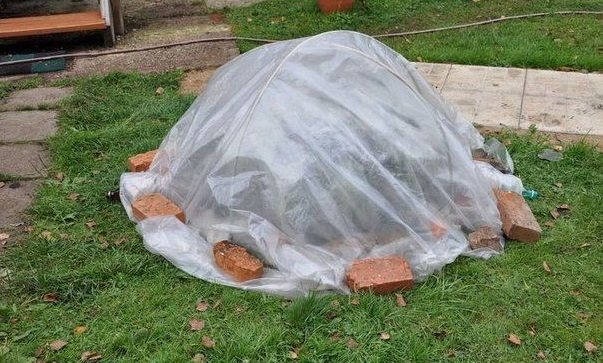

If it was not possible to find an alternative to polyethylene, it is recommended to make small holes in the film, which will act as special dies for air exchange.
Incorrectly chosen fertilizers and violation of the technology of their introduction into the soil lead to wilting of the plant. Too late or, conversely, early pruning of shoots and dry inflorescences is one of the main reasons for astilba freezing in winter. The plant, weakened after pruning, does not have time to get stronger and gain strength before the first frost.
Pruning astilba
The ideal period for pruning is after the first frost. As a rule, taking into account the climatic conditions of different regions, this is done from early October to mid-November.
Usually, after flowering, astilbe is not completely cut off, only faded peduncles are removed
Pruning should be done correctly:
- For the procedure, you need to take a secateurs and treat it with a weak solution of potassium permanganate. This will prevent diseases and pests from occurring. It is advisable to disinfect the tool after cutting each bush.
- With the help of a pruner, the stems are cut to ground level very carefully so as not to damage the young buds located just above the rhizome.
- After removing all the stems, the soil around the bush is loosened and laid in a slide.
The procedure is repeated annually at the same time.
Video: trimming astilba
Astilba transplant in the fall
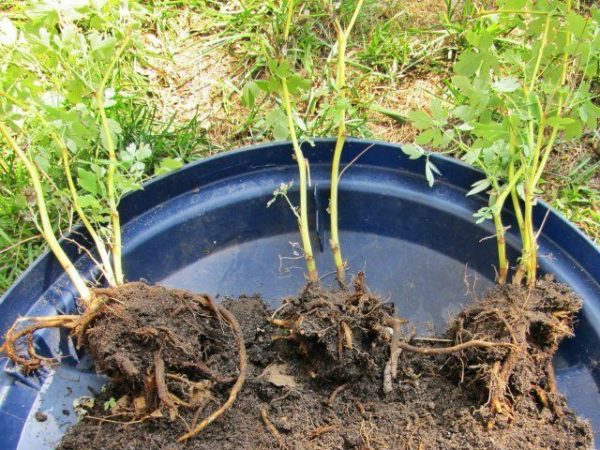

The astilba bush needs constant moisture, so experienced flower growers recommend replanting the plant after flowering. At the beginning of September or at the end of August, the sun is no longer so active, and there is enough moisture.
The shrub is transplanted in order to achieve a denser flowering. Mature astilba does not look so attractive, and the roots growing upward are exposed to extreme cold. With the help of a transplant, it is revived. This should be done every 4 years.
It is imperative to use a sharp knife when dividing the shrub so as not to harm the plant. The entire root system is usually cut into several parts so that in each new bush there are 3 intact buds. The roots are placed in a container with water so that the plants begin to develop independently and give fresh growth.
When planting, experienced flower growers leave a distance of half a meter between the bushes. Astilba needs to grow, and leaves and branches need space. The depth to plant is determined by the kidneys. They should be about 4-5 cm above soil level. After that, a thin layer of mulch of about 2 cm is covered.This will help to retain moisture and avoid weeds.
Shelter for the winter
Most often, coniferous branches are used as a natural shelter for plants.
Preparing Astilba for winter has several nuances that are important to consider:
- not all bushes require additional shelter, but only those that are most vulnerable due to their age; the rest can only be cut, weeded, fed and covered with mulch;
- it is important to ensure that the area with planted astilbe is not flooded, as this is fraught with rotting of the rhizomes;
- to insulate bushes over 5 years old and protect rhizomes from glaciation after an unexpected thaw, pine spruce branches, geotextile fabric, lutrasil or agrofibre are used;
- in case of expectation of severe frosts, an additional fence made of boards can be built around the bush, inside which dry earth and fallen leaves are poured.
How to care for perennial aster with the arrival of cold weather
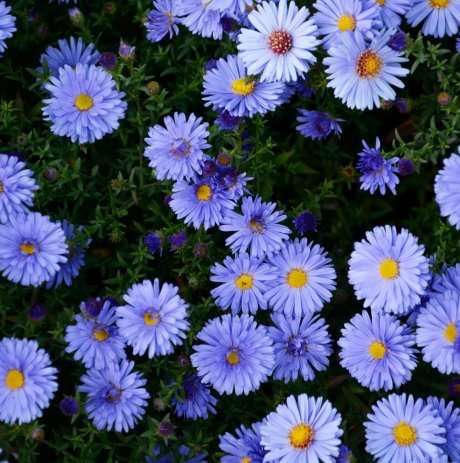

How to care for Astilbe plants in winter
Eventually, the flowers will dry out on the stems but must remain in place. When astilbe plants overwinter, you can cut out all of the foliage, leaving only a 3-inch stem above the ground. This makes it a little easier to care for in the winter, and the new growth will be returned to replace it in the spring.
You can also save flowers for dry meals indoors. However, if you wish, you can leave the flowers in place during the winter. They dry up and take an interest in your garden when most of the other plants have died. You can then cut back any dead material in early spring to make room for new growth.
Perennial asters bloom until late autumn, with the onset of stable cold weather, they do not wither, but simply begin to dry out. Then their stems are cut at the root and the base of the bush is mulched with dry leaves. Weakened plants are recommended to be additionally covered with spruce branches.
Preparing for winter, taking into account regional characteristics
Despite the fact that astilba is an unpretentious plant and firmly tolerates cold weather, there are some features of its preparation for winter, depending on the region of growth:
- Middle zone of Russia (Moscow region) and the Volga region
... In snowy and not very cold winters, it is quite enough to spud and cover the shrub with mulch after pruning. It is best to cover with spruce branches, which allow air to pass through well and does not create a greenhouse effect. - Ural and Siberia
... In these places, winters are extremely harsh, and the ground freezes up to one meter deep. Therefore, in addition to the standard shelter, a plywood frame should be erected around each bush, and on top, it is imperative to stretch the covering material.
Although astilbe is unpretentious, it endures frosts and winds, a certain care in the autumn period is simply necessary for it. After all, only the correct preparation of the plant for winter will be the key to its beautiful and lush flowering.
What are the features of the preparation of astilba in different regions
Depending on the conditions of the region in which the culture winters, there are some peculiarities in its preparation for the winter season.
In the Urals and Siberia
In the conditions of Siberian harsh winters, plants of this species at any age must be covered for the winter after pruning. For this, large frames are erected above them, or they are simply covered on top with a large layer of spruce branches and straw. Also, often in such conditions, astilbe is grown in large pots, which, with the onset of the first frost, are brought into dry and cool rooms for the winter, where they can be guaranteed to be stored in winter.


In the Central lane and the Moscow region
In the conditions of the Middle Lane, young plants for the winter are necessarily cut off and mulched, for older bushes they make a frame shelter.
In the Volga region
In the Volga region, the preparation of culture for winter has the following features:
- The culture is not covered for the winter, limiting itself to pruning and mulching.
- In the southernmost regions of this region, characterized by mild winters, they are limited to pruning only peduncles, leaving intact leaves.
Interesting: Rosa Emilien Guillot
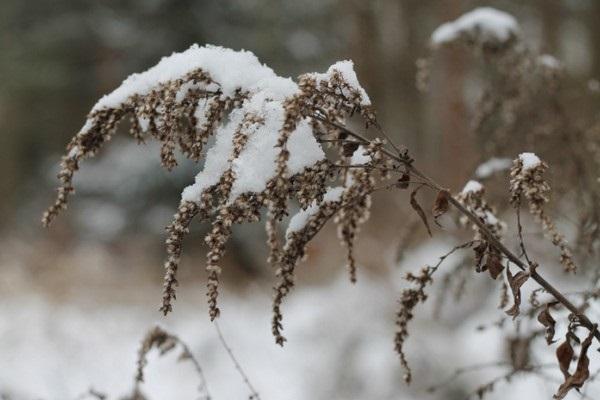

Variety of varieties
Astilba varieties are striking in their numerous species. The color palette and the shape of the inflorescences make it possible to decorate the garden for every taste. The most popular varieties are:
- Astilba "Amethyst" is a tall species with lilac inflorescences and green foliage. The bush reaches a height of one hundred and ten centimeters. It grows on almost any soil and tolerates sunny areas well.
- Astilba "Darvins Dream" - blooms in warm pink shades with dense cone-shaped inflorescences. The bush is not high - forty centimeters. The leaves are green. The variety tolerates frost well and does not require additional shelter.
- Astilba "Unique White" is a low-growing bush about fifty centimeters high. The color of the inflorescences is white, the foliage is green. Landing sites for sun and partial shade.
- Astilba "Unique Pink" is a fairly new variety that has pink-colored blooms. Differs in a pleasant smell and dense inflorescences. Grows up to fifty centimeters.


- Astilba "Bronz Elegance" is not a tall bush of about thirty centimeters with slightly drooping pink inflorescences. The shape of the bush is dense. Differs in relatively long flowering.The plant is grown in partial shade on enriched soils.
- Astilba "Vesuvius" - has red inflorescences with a slightly crimson tint (it is difficult to convey burgundy-red-crimson shades in the photo, so the color is not entirely accurate). A medium-sized shrub - sixty centimeters, grows in the shade on moist, but not wet soils. Young leaves are initially reddish in color, and during flowering become a rich green color.
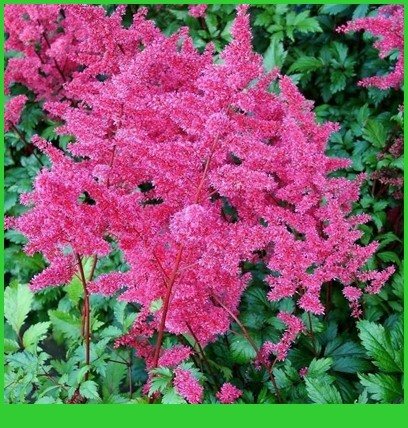

- Astilba "Vision in Red" is a plant with fluffy flowers of a dark crimson hue. The culture is undersized. Reaches a height of fifty centimeters, foliage with a bronze coating. Can grow in sun and shade.
- Astilba "Purperkerce" - blooms with inflorescences in the form of a pyramid of purple color with a lilac tint. The height of the culture is fifty centimeters. It adapts well to various climatic conditions. Differs in early flowering.
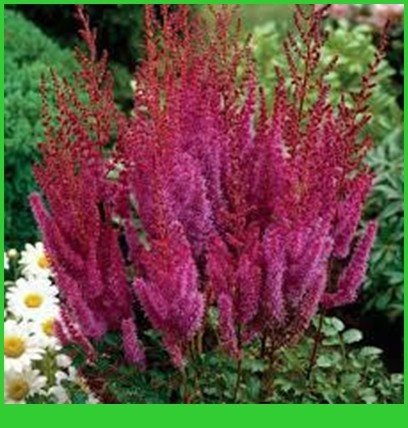

Astilba is a decoration for any garden. Such a plant gets along well with many cultures, which allows you to decorate the site with a variety of options.
Types and varieties of astilba with photos and names
Thanks to the many years of work of breeders, several hundred hybrid varieties of astilba have been bred. There are varietal groups specially designed for warm or cold climates. Some species get along well with spreading plants, others need space. Before choosing seeds, you need to focus on the weather conditions of the climatic zone, neighboring flower beds, the degree of watering.
No more than 12 species are popular; Arends, Chinese, Japanese, simple-leaved are suitable for growing in the garden. They do not require special conditions and are unpretentious in care.
Astilbe Arendsii
Created by crossing David's Astilba with others, it has about 40 varieties with a long flowering period. Its inflorescences appear in early July, and closes the flowering season at the end of August. In autumn, it perfectly sets off other flowering plants with dark green foliage. The bushes are powerful, reaching 1 m, with diamond-shaped or paniculate inflorescences. Famous varieties: Amethyst, Weiss Gloria, Rubin (up to 80 cm), Diamant (up to 1 m).
Chinese Astilbe Astilbe chinensis
Astilba Chinese cultivar Astilbe chinensis ‘Vision in Pink’ photo of flowers in the garden
It is a herbaceous bush of more than 1 m with a heterogeneous green mass. The lower leaves are wide on long petioles, after flowering they have a neat appearance, filling the flowerbed with a dark green lush mass. From above to the inflorescence, the leaves are short with a shiny texture. The stem ends with a 30-35 cm panicle of small, brightly colored flowers. It is represented by varieties not only of standard height (Purpulance, Pink, Red), but also undersized varieties (Pumila hort, up to 15 cm).
Astilba Japanese hybrid Astilbe japonica hybrids
Japanese Astilbe ‘Montgomery’ (japonica hybrid) photo in the garden
A compact plant, the ornamental value of which is the green mass of green, shiny leaves. Inflorescence panicles begin to bloom by mid-June, which is several weeks earlier than other species. Excellent cold resistance made the species popular in the territory of a risky climate with a variable temperature regime. Terry astilba Montgomery is famous among flower growers, its inflorescences can be bright burgundy or red. There are varieties of white - Deutschland, pink - Reyland, pale lilac - Europe.
Hybrid astilbe Astilbe simplicifolia
Astilbe leafy Astilbe Simplicifolia ‘Hennie Graafland’ photo of flowers in the garden
It is not at all suitable for dry and hot climates, therefore, in the steppe zone, where the scorching sun is, the plant will have no place. The visiting card of the species is the drooping varieties of Thunberg, Prikoks Alba, their inflorescences create a floating cobweb in a flower bed. Low growth, 25-50 cm, openwork panicles of inflorescences make the plant popular in border flower beds. Most often used as an accent on corners or central areas.This species can grow on the sunny side, but the tone of the leaves will be lighter, and the flowers are not so saturated.
Dwarf varieties can be grown in pots, they tolerate the home climate very well. Some blooming arrangements are perfect as a gift. It feels better outdoors, so it is advisable to take out flowerpots with room astilba in the summer to the balcony or terrace of a private house.
Increasingly, in summer cottages and in personal plots, you can find beautiful shrubs that literally catch the eye with a lush scattering of unpretentious flowers of different shades of lilac, purple, red, white and cream. That is why it attracts summer residents and landscape designers, which retains its decorative qualities until the onset of cold weather. What is this shrub? This is Astilba, a native of Asia, which can still be found in the northern parts of the American continent. Despite the fact that this shrub easily tolerates the cold, you still need to know how to prepare Astilba for winter. What are the features of caring for her in the fall? We have already considered the cultivation of astilbe in the garden earlier, but here is what needs to be done in the fall for the astilbe bush, the preparation for the winter of the plant has not yet been said. It's time to pay attention to this.
Astilba - care ahead of winter
When to prune a plant?
Since there are many varieties of astilba that bloom at different times, it cannot be said in general terms that this shrub is cut off after flowering. Some plants fade at the end of June, while others - with the onset of cold weather. After flowering, only peduncles are removed. Summer residents and owners of backyard territories are in no hurry to prune, since the shrub is beautiful even without its colorful inflorescences. Its unusual spreading leaves continue to delight the eye until early October.
Astilba pruning is done when the leaves of the bush begin to darken and dry. In this form, the plant already loses its decorative qualities. How is astilba pruning for the winter? To remove the above-ground part of the shrub, you will need a pruner; it is in the arsenal of any gardener. Before starting work, it is necessary to disinfect the tool in order to avoid contamination of the bush with various diseases. Prepare a manganese solution: several crystals of the substance per liter of water. Treat the pruning shears on all sides. After cutting off the branches of one plant, process the tool again. So prune all the bushes.
Remove shoots leaving young buds. They are always located slightly above the rhizome. So that they do not remain naked, astilba must be spilled. After loosening the soil near each bush, make a small mound about 4 centimeters high.
Astilba mulching
Astilba mulching is carried out after pruning and hilling the plant. It is necessary to protect the root system and new buds of the shrub. Mulch is a kind of blanket that covers the plant, serving as protection from cold, evaporation of residual moisture and weed propagation. Thanks to mulching, the soil at the roots remains loose, which allows it to breathe, protecting the roots not only from the cold, but also from decay. Despite its amazing endurance, astilba in autumn and winter needs such protection, especially when it comes to a one-year-old shrub or a four-year-old plant. During this period, the root system of astilba is either still too weak or is already becoming obsolete, therefore it requires special attention.
Gardeners can use various means as mulch - peat or rotted manure, as well as sawdust or bark.
How is astilba fertilized in the fall?
In order for the plant to delight you with its beauty in the spring, it is necessary to fertilize the soil layer for the winter. Astilba will answer with gratitude if you use potash-phosphorus fertilizers as top dressing.For each individual plant, 20 grams of this substance is enough. In order for the soil to be enriched with nutrients by spring, it is recommended to use humus. Decaying very slowly, such fertilizer will enrich the soil just in time for the onset of the growing season of the plant. But if the soil on your site is rich in organic matter, you do not need to do this.
Do I need to cover astilba for the winter?
If by winter astilba has already settled well on your site, which is in the middle lane, then you do not need to worry about a shelter for a plant. It belongs to cold-resistant, therefore it is able to withstand cold winters. Mulching will be enough. However, if the plant is planted in the northern regions, it is better to make a shelter for the winter. It is also necessary for plants that were planted more than four years ago. With age, their roots become bare, and the shrubs themselves lose their vitality. Such astilbe can die in frost conditions, not accompanied by snowfall.
How to make a shelter? Some gardeners use sawdust as a "blanket", others prefer hay or dry leaves, which are enough in every garden in autumn. When covering the soil, the main thing is to observe one rule - to use only materials given by nature. They do an excellent job of retaining heat and preventing excess moisture from entering the soil. And these are exactly the conditions under which you can be sure that the beautiful Astilba will safely survive the winter cold. Some gardeners cover the shrub with polyethylene. But since it is not a breathable material, it creates a greenhouse effect underneath. Such conditions are unacceptable for astilbe - its roots can rot in winter.
Owners of personal plots are very fond of and appreciate astilba for its beauty and unpretentiousness. If this plant flaunts at your dacha, then you should know that a healthy and strong plant will definitely survive the winter if you create suitable conditions for this. Only young and old astilbe bushes require special attention. Take care of them as described in this article, and in the spring you will receive a reward for your efforts - once again enjoy their charm and beauty.
Astilba is a herbaceous perennial that adorns any flower garden with its bright velvet inflorescences. In nature, it grows in mountainous regions with a monsoon climate, which makes it very unpretentious. Competent care in the fall and preparing the astilba for winter will help the plant survive the frosts and delight others in the coming season with lush inflorescences of various shades.
About the meaning of the name of astilba and a little history
Astilba got its name for nondescript matte leaves: "A" - without, negation; "Stilba" - shine, it turns out "without shine". Scottish botanist Lord Hamilton was the first to include the plant in the herbaceous classification, which now has about 40 species, including perennial and annual varieties.
In nature, it is found along the banks of water bodies, more often it grows in deciduous forests, but can grow on the shady slopes of highlands. The homeland is considered to be East Asia, North America, the Japanese islands, where astilbe was first discovered. Wet places made the green color dull, inconspicuous, but the inflorescences conquer gardeners.
European gardens got acquainted with the plant thanks to travelers who were looking for interesting, unusual things in different countries. Karl Thunberg and von Siebold brought the flower from Japan along with other exclusive goods. The end of the 18th and the beginning of the 19th century is marked by the development of park culture in Russia, recreation and outdoor walks are becoming popular among the population. Having found its application in decorating shady gardens, pond banks, small artificial reservoirs, astilba has become popular among landscape designers and florists.
Features of cultivation in different climatic regions
Colorful astilba flowers can bloom well in the shade under trees, but too dark areas are not suitable for the development of shrubs. Well, some specimens of such a plant have taken root in Russia due to their ability to withstand severe cold. Astilba is not a bait for many pests and almost does not get sick.
The most suitable climate for growing perennial flowers is their homeland - China and Japan. Such an oriental plant thrives ideally in humid, mild climates with slight temperature variations in all seasons.
How to fertilize after planting
Fertilization begins in the second year after planting.
The first feeding is carried out in April, during the growth of the bushes. Astilba loves organic matter, so it is better to fertilize with slurry diluted 1:10, but you can also use a wagon with 1-2 tbsp. spoons on the bush.
Mineral fertilizer is scattered on wet soil around the bush and covered with loosening. At the same time, they loosen it shallowly so that the mineral water does not fall on closely located roots.
The second time is fed during the formation of inflorescences and the third time after flowering. Fertilizers are applied the same as for the first feeding.
If astilba is regularly watered and mulched with peat, then it will bloom on clay and sandy soil.
Astilba reproduction by dividing the bush
Dividing a bush is the easiest and most convenient way to reproduce astilba. The best time for this procedure is early spring. In this case, the newly formed bushes will still have time to bloom this summer.
The bush is divided in such a way that each delenka receives 1-3 buds and remains with a rhizome 5 centimeters long with adventitious roots. The size of the formed division does not matter. Small and large parts of the bush take root equally well. Old rhizomes are removed during the section.
You can separate astilbe bushes during the flowering period. In this case, you will definitely not be mistaken with the choice of a plant when buying and you will get exactly the variety that you like.
Garden decoration with blooming astilba
Tall, colorful shrubs are always popular in garden design. Astilbe looks great with deciduous plants such as hosts and ferns. Long leaves of neighboring crops protect from drying out of the soil and direct sunlight.
Astilba inflorescence looks beautiful in group planting. Also, the plant feels great and harmonizes near water bodies.
Snowdrops will be an excellent combination with astilba leaves blooming in May. The perennial grows just as well with conifers.
Beautiful lush inflorescences can decorate the landscape of any site.
Planting and how to fertilize astilba in the spring
An important condition for the development and growth of astilba is a sufficient amount of potassium and phosphorus in the soil. So, 1-2 handfuls of bone meal and 25 grams of complex fertilizer are poured into the transverse grooves, 1 meter long, for plant propagation.
When planting plants in a flower garden, they dig holes about 30 centimeters deep and wide, into which 2 handfuls of ash and bone meal, 30 grams of mineral fertilizers and humus are also poured, everything is mixed and watered. Then the plants are planted and covered with a 3-centimeter layer of mulch.
Astilbe grows rather quickly and it is necessary to separate and replant them every 3-5 years. Due to the fact that astilba rhizomes grow vertically upward, old bushes begin to bulge out of the ground and young roots, which are located at the bases of the buds, being almost on top of the soil, begin to dry out.
At the same time, flowering becomes less quality and not so long, and the inflorescences decrease in size. If you constantly fertilize the soil, then astilbe can grow in one place for up to 20 years.
Top dressing is carried out in early spring with nitrogen fertilizers, and after the end of flowering or in the fall, potassium and phosphorus are applied, 20 grams per plant. At the same time, the soil is slightly loosened and mulched.
Astilba growing from seeds
Propagation by seeds, this method can be used for species propagation. This is due to the fact that astilba seedlings can retain the characteristics of the mother plant only partially or not at all. Seedlings grown from varietal seeds are used for breeding.
Astilba seeds are very small and do not always have time to ripen. If you are lucky to wait for ripening, then they are shaken out of the inflorescences in September and stored until spring. In March, sphagnum peat and sand are placed in a wide box or other container, in a ratio of 3: 1, snow is poured on top, in a layer of 1 centimeter.
If there is no snow on the street, then you can use the snow from the freezer or simply pour water on the substrate. Seeds are sown on top of the snow. When the snow melts, it moisturizes the soil and helps the seeds sink into it. After the snow has completely melted, the container is placed in a plastic bag and placed in a refrigerator or other cold enough place for stratification for about 20 days.
As soon as the shoots appear, the container with them is rearranged in a bright place with an air temperature of 18 to 22 degrees Celsius. Young plants are watered very carefully at the root. Some growers even recommend watering with a syringe - injecting water directly into the substrate under the plant.
Astilba seed germination is low, and the seedlings that appear grow very slowly and only by the end of the year form a small rosette of leaves. If young plants do not grow closely together, then their dive can be carried out next spring.
If the seedlings have sprung up densely, then the dive is carried out when 3-4 leaves appear in them. Astilba grown from seeds blooms only in the 3rd year of its existence.
Most popular varieties


- Arends sometimes grows up to 1.5 meters in height and has an incredibly pleasant aroma. Flowers have different shades, turning the garden into a continuous gentle cloud, sometimes for more than two months.
- Boogie-woogie forms a lush foam, pleasing to the eye with panicles. But the scent is somewhat different and does not bloom so long.
- Lilliputians often decorate borders. Blooms from mid-July to late August. The plant is best suited for alpine slides.
- Gloria tolerates the winter season better than other varieties and looks best near ponds.
- Japanese astilba is beautiful even after flowering. Her dried panicles are most suitable for winter bouquets. Differs in dark brown rhizomes.
- Chinese astilbe has rather large basal leaves on long cuttings. And on the stems with flowers, the leaves are shiny, openwork in shape. Inflorescences are about 30 cm long, sometimes less. There are varieties of snow-white and pinkish shades.
Forcing astilba
Astilba is a good forcing plant. Early flowering, low-growing varieties are best suited for this purpose. The most commonly used varieties are the Japanese hybrid astilba, which grows into a compact small bush.
For distillation, young seedlings are taken, obtained during reproduction by renewal buds, which have at least 6 buds. Plants obtained by dividing old bushes are unsuitable for this purpose. Selected astilbes are planted in pots in the fall and placed in a cold place, covered with peat or spruce branches.
At the beginning of winter, plants are brought into rooms where the air temperature is 10-14 degrees. As soon as the leaves begin to bloom, the temperature should be raised to 16-18 degrees and abundant watering and spraying should be started. Spraying is stopped when the first flowers appear, which can be expected 10-14 weeks after the start of forcing.
If you move astilbe to a warmer place in February-March, you can expect faster flowering.Recommended varieties for forcing are Peach Blossom, Bonn, Europa, Emdem, Cologne and Deutschland. Astilbe distillation is especially popular with German and Dutch gardeners. Such plants are used to decorate office and public premises.
Astilba, which got its name for the lack of gloss on the leaves and inflorescences, brilliantly copes with the decoration of the suburban area. The plant is very unpretentious, frost-resistant and grows well even in the shade of spreading trees, which cannot but please summer residents. However, some care is still required. The best time for pruning astilba is autumn, because the period of preparation of the bush for wintering is coming.
Description of astilba
How to grow astilbe in the Astilbe ‘Bressingham Beauty’ (x arendsii) photo
Astilba belongs to herbaceous perennials, the upper part of which dies off for the winter, and the rhizome remains in the ground. Roots exposed during the summer period need to be covered with an additional layer of soil, and the harsh climatic conditions require additional cover with special industrial material or foliage.
Plant height ranges from 8 cm to 2 m, you can choose a representative for any flower bed or architectural structure. Miniature dwarf species barely reach 30 cm, their flexible stem forms an arc shape, for which they called the flower "drooping". There are known varieties with drooping inflorescences Tenberg, Lemoine. Despite the variety of colors, the choice remains on bright, saturated ones, which will look impressive on the shady side of the garden.
The leaf plate is not uniform, depending on the variety and place of growth. The hue can vary from dark green in summer to brownish red in autumn. The leaf is planted on a long petiole, some varieties have a pinnate shape, others have a jagged edge. Most species are represented by a complex leaf structure, consisting of several pointed cordate leaves.
The underground part of the plant is distinguished by its heterogeneity: there are species with a loose soft root, and some are strong treelike. Many processes depart from the central rhizome, the lower ones die off, and new ones form on top. The plant increases the root system upwards by 3-5 cm, so the roots are exposed in autumn.
Astilba in garden design Astilbe Japonica ‘Europa’ group photo of mixborder
An original combination will be a landing with Astilbes and hosts, or Volzhanki. The result is a delicate composition with different types of paniculate inflorescences. Just airy mood!
Astilba in landscape design
Astilba is an excellent plant for decorating flower beds and parks. Small groups of flowering plants look spectacular against the background of green bushes. An excellent solution would be to land an astilbe near a garden pond or on a rocky hill in shaded areas.
Astilba goes well with plants that have large, smooth leaves that make a striking contrast to its openwork dissected leaves. Such plants include hosts, irises, incense, tulips and others. It is good to plant not tall perennials that bloom in spring, for example, saxifrage, tenaciousness, lamb and umbilicus, to the fore in front of higher varieties of astilba. The borders made of astilbe also look beautiful.
Since there are varieties with different flowering periods, you can choose their combination in such a way that the delicate astilbe inflorescences will delight with their flowering throughout the summer. They also practice planting plants in groups, with different colors of flowers in one.
Astilba flowers are also used for cutting. Although cut they do not last long, they add bright colors to the interior and fill the room with a light honey aroma. It is also possible to use dried astilba inflorescences in winter bouquets.
Upon completion of flowering, the bushes look just as decorative, thanks to the beautiful and sophisticated foliage.Peduncles, even with seed pods, look very attractive, so it is not recommended to prune them until autumn. And some growers leave them for the winter to revive the snowy landscape.
Astilba has found its use for medical purposes. So, in ancient times, the Chinese used the leaves and roots of the plant as a tonic, anti-inflammatory, antipyretic agent for diseases of the kidneys and skin. And the seasoning for meat made from astilba leaves is still used in Japan to this day.
General information
Astilba is a herbaceous perennial with an overground part dying off for the winter. The height of erect stems can vary from 8 centimeters to 2 meters. Leaves are basal, on long petioles. They can occasionally be simple, but in most species they are double- or triple-pinnate with a jagged edge. The color of the leaves is dark green or reddish green.
The flowers of the plant are small, collected in lush apical panicle inflorescences, which is why they have a very attractive appearance. Flowers are available in white, lilac, cream, pink, purple or red. Astilbe blooms in June-July and the duration of its delicate delicate flowering is 25-35 days.
The plant has a woody, dense or loose rhizome, depending on the species. Each year, the upper part of the rhizome forms daughter buds, while the lower part gradually dies off. Since there is a vertical growth of the rhizome (the growth is approximately 3-5 centimeters per year), the plant must be sprinkled with fertile soil annually at the end of autumn.
The combination of astilba with other plants
In terms of "friendship" with other plants, astilbe is undemanding - it coexists well with the rest of the "inhabitants" of the garden. therefore picking up neighbors is purely aesthetic considerations.
So, openwork leaves of astilba look great in combination with whole leaves of hellebore, podophyllum or bergenia. From flowers, the plant can be combined with kupena, irises, late tulips, mountain goat weed, lilies of the valley.
As a rule, it is planted on rocky hills, in ridges along lawns, near the shores of reservoirs and semi-shady mixborders.
The basics of proper plant care
Proper plant care is not so difficult, but in order to grow a chic astilba, you must adhere to the following rules.
Watering: how it should be
In caring for astilba, it is important to provide it with sufficient moisture,
with regular watering. Even a slight delay and short-term drying out of the soil leads to the fact that the leaves wither, the inflorescences become smaller, the flowers lose their richness of color, and the plant itself takes on a somewhat sloppy appearance.
Weeding and loosening the soil
Astilba perfectly drowns out weeds, as it has very powerful branched rhizomes. But while the plant is young, weeding is simply necessary for it, since it is difficult for immature flowers to fight weeds. After rain and watering, it is advisable to loosen the soil around Astilba so that a crust does not appear. However, if it is mulched, then these manipulations are not required.
By the way, thanks to mulching with peat and annual hilling, you can slow down the aging of the bush, because the buds will be underground all the time.
When and how to feed
To preserve the decorativeness of the plant, it is also necessary to feed astilbe. It is carried out every year, but the choice of fertilizing agent depends on the land in which the plant was planted. So, if it was planted in moist soil, it is necessary to use complex additives, and potash and phosphorus fertilizers - after flowering.
If the plant was planted in dry land, then peat or compost is taken.
Separate fertilizers are used for a specific result.
For example, diluted manure or other organic fertilizers are used to keep the leaves and petals juicy. It is added at the beginning of sap flow, that is, in the spring.In order for the plant to develop well, mineral fertilizers are applied. It is important to observe the correct concentration: 25–35 grams per liter of water. This fertilizer is applied in the fall before wintering. Potassium sulfate or urea with superphosphate will help to increase the flowering period and give the plant splendor. These mixtures should be added to the garden beds in the summer.
Seed collection
It is necessary to collect flower seeds in the fall, when the plant has faded (usually in September).
Despite the fact that they are quite small, it is not difficult to assemble them. Faded and dried inflorescences must be cut off, wrapped in paper and set aside in a warm place. After two weeks, it is enough to shake the inflorescences, and the seeds will spill out of them.
Astilba seeds are stored in a paper bag.
Did you know?
Astilba is ready to bloom in the first year after planting, however, it is advisable not to allowof this, cutting off the peduncles in advance. The fact is that a fragile plant can die, putting all its strength into the first flowering. In the case of removing young flowers, all juices are spent on the formation of healthy buds, rooting and growth of the rhizome. At the end of the season, the entire bush is cut under the rhizome, and mulched with peat or soil. This manipulation is carried out every year.
Mulching culture
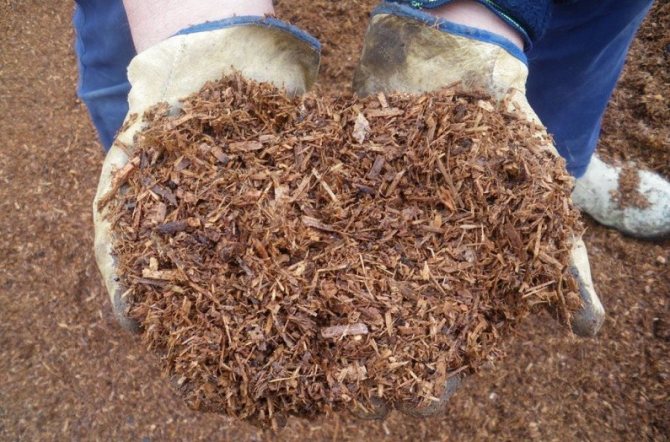

Mulching helps protect young buds as well as adventitious roots of Astilba
Despite the fact that astilba is quite hardy, before the onset of winter, its rhizome still needs to be warmed. To do this, after loosening the soil around the bush, it is necessary to cover it with sawdust, peat, tree bark, rotted manure, dry earth with sand or small spruce twigs. The layer of such a coating should be at least 7 cm in young plants and 25 in old ones.

